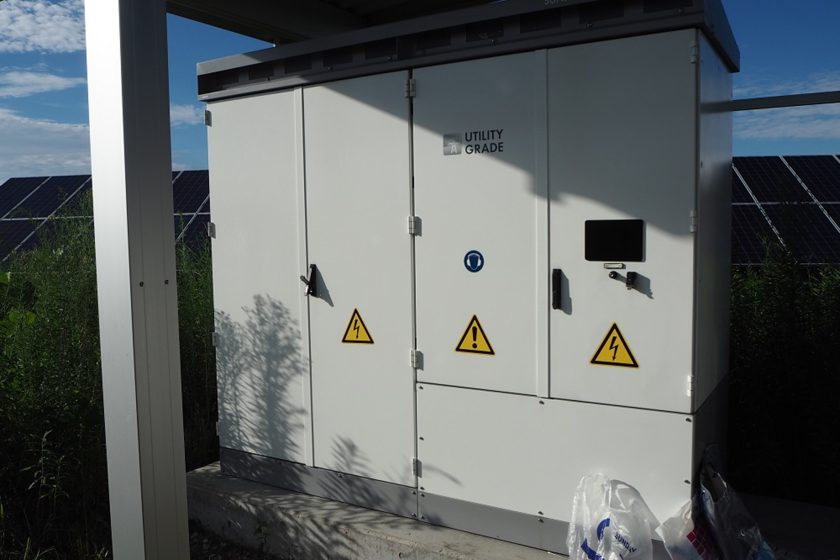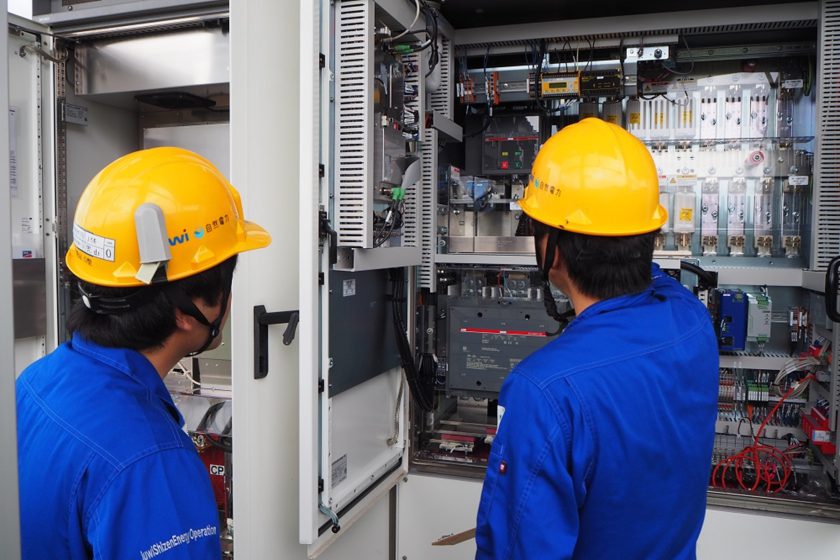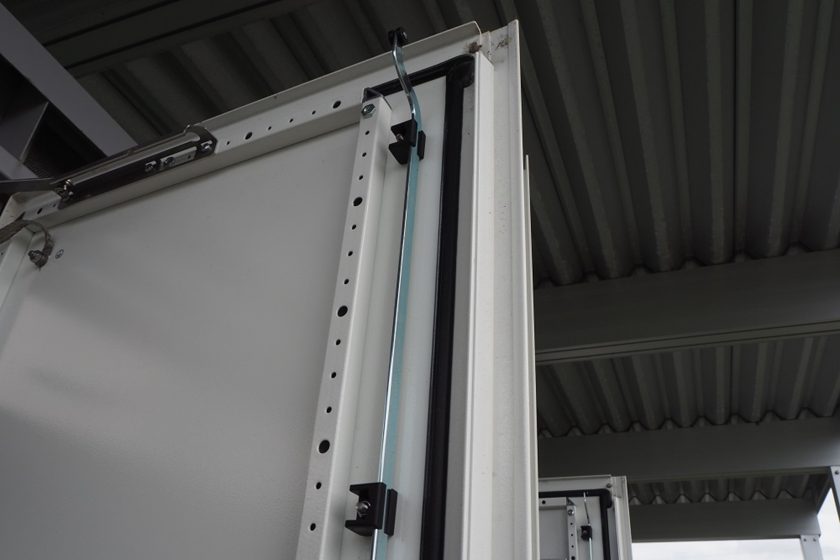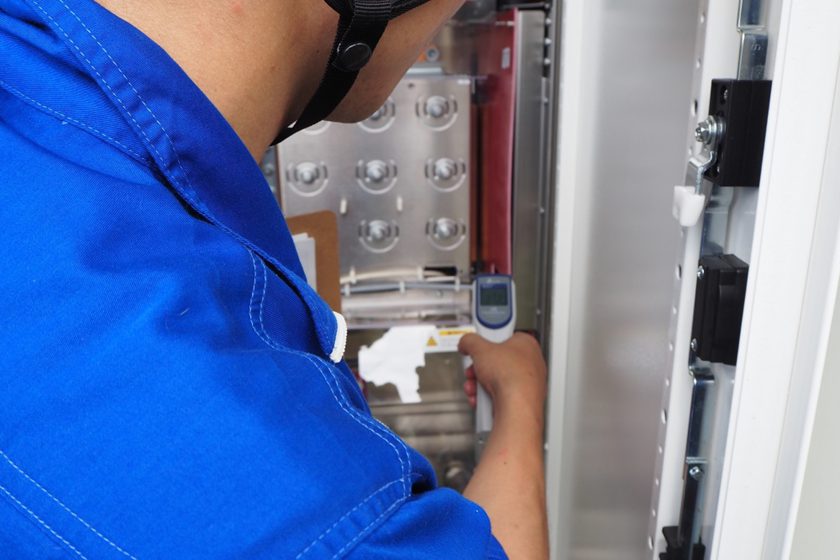Periodic inspection of a solar power plant
Hello everyone, this is Ishikawa.
The theme of this blog is “Periodic Inspection of a Solar Power Plant”.
| This blog is a re-post of an article that appeared on HATCH (on June 6, 2022), an owned media outlet provided by Shizen Energy Inc. |
In order to continue to maintain the potential of power plants, the Revised Act on Renewable Energy Special Measures, which was enacted in 2017, requires solar power generation facilities with an output of 50 kW or more to be inspected.
So what exactly is inspected and how?
Let’s take a look at the inspections conducted once every two years at a solar power plant in Tainai City, Niigata Prefecture, which is maintained and operated by the Shizen Energy Group.
First, as an electrical inspection, the power conditioner (PCS) is inspected.
 These boxes you see a lot at power plants are the power conditioners.
These boxes you see a lot at power plants are the power conditioners.
There are basic inspection items recommended by each manufacturer, and inspections are performed accordingly.
- Visually check for abnormalities in the fuses
- Inspect for loose bolt connections
- Check the operation of the fan
 Inspecting fuses and bolts
Inspecting fuses and bolts
Also, checking the rubber seal on the door is very important!
This is to prevent rain and other moisture from getting inside, but if it is cracked, it will not be able to fulfill its function, so this check is an important part of the process.

Rubber seals are visually inspected
We are still not finished…the next step is to check the heater.
The semiconductor, which is a key component of the PCS, is sensitive to moisture, so the heater is designed to reduce humidity.
 Infrared thermometer measures the temperature of the heater
Infrared thermometer measures the temperature of the heater
And finally…
We clean the filter attached to the top and bottom of the PCS. The filter itself is rinsed with water, and dirt is removed from the area where the filter was removed.

It is important to keep the filter clean because a dirty filter reduces cooling capacity and electricity conversion efficiency!
So far we have looked at electrical inspections, but there are 20 to 30 other items to be inspected, including checking for damage to panels, loose bolts on electronic devices and equipment, and so on.
This inspection process takes one to three days, depending on the size of the power plant.
Even a slight drop in power generation efficiency due to minor problems can result in a loss of tens of thousands of yen per day. Problems such as cable breaks and loose bolts tend to start increasing around the fifth year of installation, so it is important to conduct not only periodic inspections but also daily maintenance.
Our O&M services include periodic inspections as a standard service, and for other services, please click here.
We will continue to provide you with information on what goes on in the maintenance/inspection of power plants.
Thank you for reading to the end of my blog!